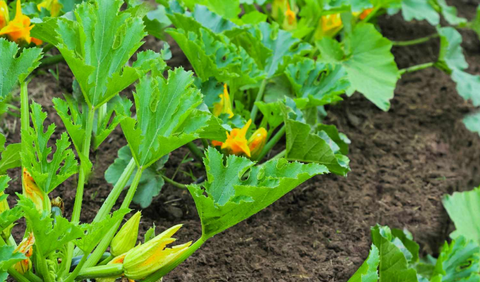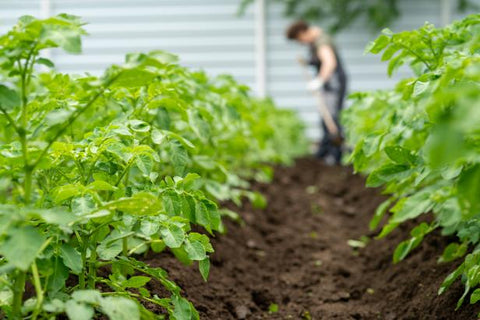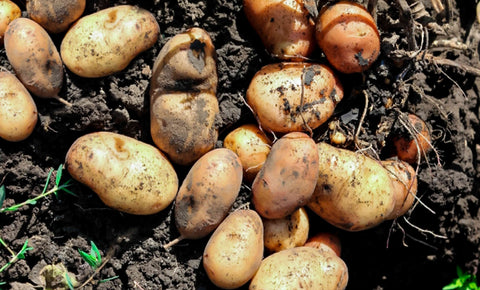Tulips, with their vibrant hues and elegant blooms, are a beloved addition to any garden. However, achieving successful tulip planting requires careful consideration and attention to detail. From selecting the right bulbs to addressing common issues, this comprehensive guide will provide you with all the information you need to cultivate beautiful tulips in your garden.following content also has some reference value for raised garden beds.
Selecting Tulip Bulbs
Understanding Bulb Varieties
Tulip bulbs come in a variety of shapes, sizes, and colors, each offering its own unique charm. From single early tulips to parrot tulips, understanding the different varieties available will help you choose the perfect bulbs for your garden.
Evaluating Bulb Quality
When selecting tulip bulbs, it's essential to choose ones that are firm, plump, and free from mold or soft spots. Inspect bulbs carefully to ensure they are healthy and viable for planting.
Sizing Considerations
Tulip bulbs vary in size, with larger bulbs often producing larger and more robust flowers. Consider the desired bloom size when selecting bulbs, and opt for larger sizes for a more impressive display.
Preparing the Planting Site
Sunlight Requirements
Tulips thrive in full sun to partial shade, so it's essential to select a planting site that receives adequate sunlight. Choose a location with at least six hours of sunlight per day for optimal growth and flowering.
Soil Preparation Techniques
Prepare the soil by loosening it to a depth of at least 12 inches and removing any weeds or debris. Incorporate organic matter such as compost or well-rotted manure to improve soil structure and fertility.

Drainage Considerations
Tulips prefer well-draining soil to prevent waterlogged conditions, which can lead to bulb rot. Ensure proper drainage by amending heavy clay soils with sand or perlite and avoid planting in low-lying areas prone to water accumulation.
Planting Tulip Bulbs
Timing and Seasonality
Plant tulip bulbs in the fall, preferably six to eight weeks before the first hard frost. This allows the bulbs to establish roots before winter sets in and ensures robust growth and flowering in the spring.
Proper Planting Depth
Plant tulip bulbs at a depth of three times their diameter, with the pointed end facing upwards. Ensure adequate spacing between bulbs to allow for proper air circulation and room for growth.
Spacing Guidelines
Space tulip bulbs approximately 4 to 6 inches apart to prevent overcrowding and competition for nutrients. Plant bulbs in groups or clusters for a more natural and visually appealing display.
Post-Planting Care
Watering Strategies
After planting, water the bulbs thoroughly to settle the soil and initiate root growth. Continue to water as needed throughout the fall, keeping the soil consistently moist but not waterlogged.
Fertilization Techniques
Apply a balanced fertilizer high in phosphorus to promote healthy root development and robust flowering. Avoid fertilizers high in nitrogen, as they can encourage excessive foliage growth at the expense of flowers.
Mulching Practices
Mulch the planting area with a layer of organic mulch such as straw or shredded leaves to insulate the soil and conserve moisture. Mulching also helps suppress weeds and regulate soil temperature, promoting overall plant health.
Dealing with Pests and Diseases
Common Pests Affecting Tulips
Tulips are susceptible to pests such as aphids, slugs, and bulb mites, which can damage foliage and bulbs. Monitor plants regularly for signs of pest infestation and take appropriate measures to control populations.
Disease Prevention Measures
Prevent fungal diseases such as gray mold and botrytis by ensuring proper air circulation and avoiding overhead watering. Remove and dispose of any infected plant material promptly to prevent the spread of disease.
Organic Pest Control Methods
Implement organic pest control methods such as companion planting with pest-repellent herbs or introducing beneficial insects like ladybugs and lacewings to naturally control pest populations without the use of harmful chemicals.
Extending the Blooming Season
Succession Planting Techniques
Extend the tulip blooming season by planting a variety of early, mid-season, and late-flowering cultivars. This ensures a continuous display of blooms throughout the spring months, prolonging the enjoyment of your garden.
Deadheading Strategies
Remove spent flowers promptly to prevent the formation of seed heads and redirect energy back into bulb development. Deadheading also promotes continuous flowering and prevents self-seeding, which can lead to overcrowding.

Companion Planting Ideas
Complement tulips with companion plants such as daffodils, grape hyacinths, or pansies to create visually stunning combinations and maximize garden interest. Choose plants with similar cultural requirements and complementary bloom times for harmonious pairings.
Tips for Container Tulip Planting
Selecting Suitable Containers
Choose containers with adequate drainage holes and sufficient depth to accommodate tulip bulbs' root systems. Opt for materials such as terracotta or plastic that provide insulation and prevent moisture loss.
Soil Mix Recommendations
Use a well-draining potting mix formulated for container gardening, supplemented with perlite or vermiculite for added aeration. Ensure the soil is evenly moist but not waterlogged, as container-grown tulips are more prone to drying out.
Container Maintenance Tips
Place containers in a sunny location and rotate them regularly to promote even growth and flowering. Water consistently and fertilize every few weeks with a balanced liquid fertilizer to support healthy plant development.
Overwintering Tulip Bulbs
Mulching for Winter Protection
Protect tulip bulbs from freezing temperatures and frost heaving by applying a layer of mulch such as straw or pine needles to insulate the soil. Mulching also helps regulate soil temperature and prevent moisture loss during winter dormancy.
Storing Bulbs Indoors
In regions with harsh winters, dig up tulip bulbs after foliage has died back and store them indoors in a cool, dry location until spring. Place bulbs in mesh bags or shallow trays filled with peat moss or vermiculite to prevent desiccation and maintain viability.
Assessing Bulb Viability
Before replanting stored bulbs in the spring, inspect them for signs of rot or disease and discard any damaged or unhealthy bulbs. Healthy bulbs should feel firm and plump, with no soft spots or mold present.
Troubleshooting Common Issues
Identifying and Correcting Leggy Growth
Leggy growth in tulips is often caused by insufficient sunlight or overcrowded planting conditions. Provide adequate spacing between bulbs and ensure plants receive at least six hours of direct sunlight per day to promote compact, sturdy growth.
Addressing Flowering Failure
Flowering failure in tulips can result from factors such as inadequate chilling period, improper planting depth, or bulb exhaustion. Address these issues by ensuring bulbs are planted at the correct depth and providing adequate chilling periods during winter dormancy.
Resolving Yellowing Leaves
Yellowing leaves in tulips may indicate nutrient deficiencies, overwatering, or pest infestation. Address these issues by fertilizing with a balanced fertilizer, adjusting watering practices, and treating pests as needed to restore plant health.
Tulip Varieties for Different Climates
Cold-Hardy Tulip Varieties
Choose cold-hardy tulip varieties such as Darwin hybrids, Emperor tulips, or species tulips for regions with harsh winters and cold temperatures. These varieties are more resilient to freezing temperatures and will reliably return year after year.
Heat-Tolerant Tulip Varieties
Select heat-tolerant tulip varieties such as lily-flowered tulips, Kaufmanniana tulips, or Fosteriana tulips for regions with hot summers and mild winters. These varieties thrive in warmer climates and are less prone to heat stress or premature dormancy.

Recommendations for Specific Regions
Consult local gardening resources or extension offices for recommendations on tulip varieties best suited to your specific climate and growing conditions. Choose varieties that are well-adapted to your region's temperature range and soil type for optimal performance.
Conclusion
From bulb to blossom, the journey of tulip planting is a rewarding and fulfilling endeavor for gardeners of all skill levels. By selecting high-quality bulbs, preparing the planting site, and providing proper care and maintenance, you can enjoy a spectacular display of tulips in your garden year after year. With attention to detail and a bit of patience, you'll be rewarded with vibrant blooms and lasting memories to cherish for seasons to come.









